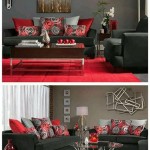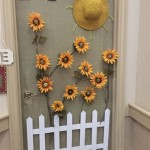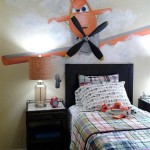Steampunk Home Decor: A DIY Guide
Steampunk, a genre that blends Victorian aesthetics with industrial technology, offers a unique and captivating approach to home decor. It allows for creative expression, incorporating gears, pipes, aged metals, and vintage designs to create a distinctive ambiance. This article will explore how to achieve a steampunk aesthetic through DIY projects, focusing on key elements and practical techniques to transform a living space.
Understanding the Steampunk Aesthetic
Before embarking on DIY projects, it's crucial to understand the core principles of steampunk decor. This style is characterized by a fusion of the Victorian era (roughly 1837-1901) and imagined futuristic technology. Key visual elements include:
*
Metals:
Brass, copper, and iron are dominant materials, often distressed or aged to create a weathered look. These metals are used in everything from furniture accents to decorative pieces.*
Gears and Cogs:
Exposed gears and cogs are iconic steampunk elements, symbolizing the mechanics and machinery of the era. They can be incorporated into clocks, lamps, wall art, and furniture.*
Leather and Wood:
These natural materials add warmth and texture to the steampunk aesthetic. Leather is used for upholstery, accents, and accessories, while dark wood is common for furniture and paneling.*
Vintage and Antique Items:
Incorporating genuine antique pieces, such as old typewriters, globes, and navigational instruments, enhances the authenticity of the steampunk decor.*
Industrial Elements:
Exposed pipes, valves, and gauges contribute to the industrial feel of the style. These elements can be functional or purely decorative.*
Earth Tones and Rich Colors:
The color palette typically includes browns, creams, sepia tones, and dark greens. Accents of burgundy, copper, and gold add richness and visual interest.Understanding these elements will guide the selection of materials and the design of DIY projects.
DIY Steampunk Projects: Practical Applications
The following are examples of DIY projects suitable for integrating steampunk elements into a home environment. These projects cover a range of skill levels and can be adapted to individual preferences and available resources.
1. Gear Wall Art:
This project involves creating decorative wall art using gears and cogs of varying sizes. Materials needed include gears (available at craft stores or online), a wooden canvas or backing board, adhesive (epoxy or strong glue), and metallic spray paint or paint finishes.*
Process:
Begin by arranging the gears on the canvas to create a desired pattern or design. Experiment with different layouts before permanently adhering the gears. Once the layout is finalized, apply adhesive to the back of each gear and press it firmly onto the canvas. Allow the adhesive to dry completely. Finally, apply metallic spray paint or paint finishes to achieve a weathered or aged appearance. Consider using different shades of bronze, copper, and gold to create visual depth.
2. Pipe Lamp:
A pipe lamp is a quintessential steampunk element that combines functionality and aesthetic appeal. This project requires plumbing pipes (typically black iron or galvanized steel), pipe fittings (elbows, tees, flanges), a lamp socket, wiring, a lampshade (optional), and safety equipment (gloves, eye protection).*
Process:
Design the lamp structure using the pipes and fittings. Sketch out the desired shape and configuration before assembling the components. Ensure that the base of the lamp is stable and the overall design is visually appealing. Assemble the pipes and fittings, tightening them securely. Run the wiring through the pipes, connecting it to the lamp socket. If using a lampshade, attach it to the socket. Test the lamp to ensure it functions correctly. Consider adding a dimmer switch for adjustable lighting. The pipe lamp can be left in its natural metal finish or painted to match the overall decor.
3. Steampunk Clock:
Transform an ordinary clock into a steampunk masterpiece by adding gears, metal accents, and a distressed finish. This project requires a clock (either new or salvaged), gears, metal embellishments, adhesive, metallic paint, and sandpaper.*
Process:
Disassemble the clock to access the clock face and mechanism. Apply adhesive to the back of the gears and metal embellishments and attach them to the clock face, creating a visually interesting arrangement. Allow the adhesive to dry completely. Apply metallic paint to the clock case and embellishments, creating a cohesive look. Use sandpaper to distress the paint, revealing the underlying layers and creating a weathered appearance. Reassemble the clock, ensuring that the mechanism functions correctly. Consider replacing the clock hands with more ornate or vintage-style hands to complete the steampunk transformation.
4. Leather and Metal Accents:
Integrate leather and metal accents into existing furniture and decor to add subtle steampunk touches. This can involve adding leather straps to chairs, attaching metal corners to tables, or creating leather-wrapped containers.*
Process:
Source leather scraps or purchase leather from a craft store. Cut the leather into desired shapes and sizes, considering the intended application. For example, leather straps can be used to secure cushions to chairs, providing both aesthetic appeal and functional support. Metal corners can be attached to tables using small nails or screws, adding a protective and decorative element. Leather-wrapped containers can be created by wrapping leather around jars or boxes and securing it with adhesive or stitching. Experiment with different leather textures and colors to create visual contrast and interest.
5. Vintage-Inspired Wall Decor:
Create vintage-inspired wall decor using maps, blueprints, and antique prints. Frame these items and arrange them on the wall to create a gallery-style display.*
Process:
Source vintage maps, blueprints, and antique prints from antique stores, flea markets, or online retailers. Alternatively, create reproductions of these items using digital images and printing services. Select frames that complement the steampunk aesthetic, such as ornate wooden frames or metal frames with a distressed finish. Arrange the framed items on the wall, creating a visually balanced and cohesive display. Consider using different frame sizes and orientations to add visual interest. Incorporate other steampunk elements into the display, such as gears, cogs, or vintage tools.Materials Sourcing and Preparation
Successful DIY steampunk projects rely on careful materials sourcing and preparation. Consider the following:
*
Recycling and Repurposing:
Embrace recycling and repurposing whenever possible. Salvaged metal, discarded pipes, and old furniture can be transformed into unique steampunk pieces. Visit salvage yards, flea markets, and antique stores to find interesting and unusual materials.*
Craft Stores and Online Retailers:
Craft stores and online retailers offer a wide range of materials specifically designed for steampunk projects, including gears, metal embellishments, and specialized paints. These stores also provide tools and supplies needed for cutting, shaping, and assembling materials.*
Safety Precautions:
When working with metal, pipes, and electrical components, prioritize safety. Wear appropriate protective gear, such as gloves, eye protection, and a dust mask. Follow safety guidelines when using power tools and handling potentially hazardous materials.*
Surface Preparation:
Before painting or applying finishes, clean and prepare the surfaces of the materials. Remove any dirt, rust, or debris. Sand rough surfaces to create a smooth finish. Apply a primer to improve adhesion and prevent corrosion.*
Finishing Techniques:
Experiment with different finishing techniques to achieve a weathered or aged appearance. Use dry brushing, layering, and distressing techniques to create visual depth and texture. Apply a sealant to protect the finished surfaces and prevent wear and tear. Antique glazes and waxes can enhance the vintage look of the materials.By understanding the key elements of steampunk decor and implementing these DIY projects, individuals can transform their homes into captivating spaces that reflect their unique creativity and appreciation for this imaginative genre. The combination of Victorian elegance and industrial functionality creates an ambiance that is both visually stunning and intellectually stimulating.

Diy Steampunk Decor Project Home

Diy Steampunk Apothecary Jar Home Decor Bedroom Jars

15 Steampunk Diy Craft Ideas To Do At Home

20 Steampunk Project Ideas Unique Creations By Anita

50 Steampunk Style Home Decor Items Celebrating The Mechanical Side Of Life

7 Ways To Incorporate Steampunk Interior Design In Your Home Foyr

Diy Steampunk Apothecary Jar Home Decor

Cool Tips To Steampunk Your Home By Homedit Steampunklot

50 Steampunk Style Home Decor Items Celebrating The Mechanical Side Of Life

Pin On Our House Ideas
Related Posts







